In each descriptive article of the towns of Costa Rica, we always mention the feria. But, what is it, and why should we care?
Simply put, the feria is the weekly farmers’ market held in just about every town, large and small, in the country. The majority begin on Friday and run into the evening, then reopen for several hours early Saturday. It is the dependable outlet for all of your fruit, vegetables, grains like rice and beans, flour, meats, eggs, seafood, and fish. Add to this: dairy products, from milk to local farmers’ cheese, baked goods, coffee, then more coffee, spices and fresh herbs, and you soon discover there is very little you cannot find. There is also usually a selection of shoes, clothing items, and kitchen supplies—the list goes on and on.
The feria did not begin as a committee-designed program to help the local farmers and growers. It started roughly 160 to 180 years ago, almost by accident. Local growers, seeking a market for their harvest, would set up a display of produce and other handmade foodstuffs along a heavily traveled roadside or at an intersection. It only took one returning customer for the farmer to realize that the idea might work.
Soon, the idea of a weekly event held in clean surroundings coalesced into what we now know as the feria, and brought consumers who began to depend on it. As time went on, the government saw that a large and growing food-purveying organization would need guidance, oversight, and direction. Each town or canton organized a committee to provide an outlet for the area’s producers and a retail location for consumers. Today, each town’s feria is a key ingredient in the commerce of the town, and a jewel in the distribution of wholesome foods.
More Than a Store
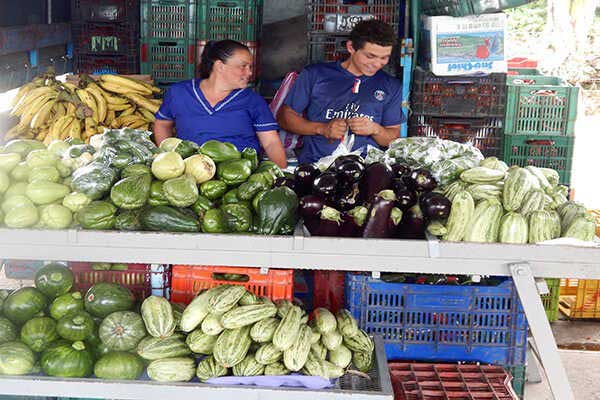
What began simply as a retail operation to help local growers market their produce has grown into much more. The feria is simply the “go-to” place for organic, wholesome, nutritious offerings. Most of the food is grown and tended to by the people working the market stall. As proud as they are of their offerings, they are so happy when you establish them as your favorite supplier of tomatoes, mangoes, or potatoes, and you’ll soon find that they set aside a special tray just for you. Eventually, you may even become friends.
The weekly feria has also become a social scene. Many expats find themselves learning the times that their countrymen attend market so they can show up at the same time and join them for lunch at one of the several sodas (small lunch counters) or at a cafetería (coffee shop) for a fresh-baked pastry and a cup of Costa Rica’s heavenly brew.
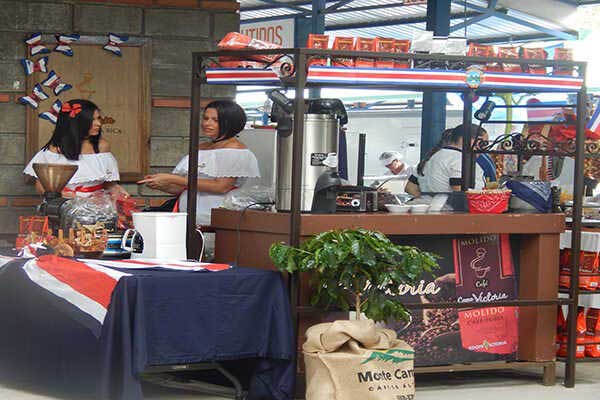
Ferias today are located in central locations that make access easy. Parking is provided, along with street access for pedestrians, bus-takers, and taxicabs. While not many are in weathertight buildings, most are under large, extended shed roofs that protect from the elements, mostly rain, so your shopping doesn’t have to be interrupted. Cab stands and waiting areas are also dry and sheltered. Security is not an issue as there is a team on duty, both in the parking areas and in the sales aisles. You generally have your choice of seating in central areas and shopping lanes, as well as at the sodas while you’re enjoying food and refreshment.
The idea behind all of this is to provide the consumer with the desired shopping experience—whether that be a quick in-and-out trip to grab the eggs, cheese, and lettuce before getting back to work, or taking advantage of the weekly gathering place where great deals are compared and coffee is shared with friends, all at a leisurely pace.
More Than a Tomato
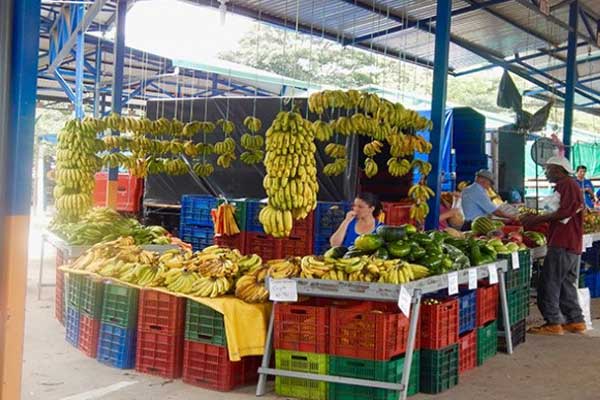
Remember the last time you went to a home-country megastore to buy a tomato? Approaching the produce department, you spied a large display of medium-sized tomatoes, all the very same shade of red, a little firm, and bruise-free after having been trucked from California to Orlando. The first slice had no flavor, nor did the second, or the third! It was a GMO monster.
At the feria, tomatoes will look like the ones you used to sneak from grandma’s garden. They are various sizes, sometimes with gnarly bumps. Some are a lighter shade of red and others are almost scarlet. You take a chance and buy a kilo. At home, you’re starving so you get the fixings for a sandwich. When you slice the tomato, the juice runs down your fingers. Without thinking, you pop a slice in your mouth, and wow! What is this? It tastes like a real tomato, cool and slightly acidic, making you want to eat the whole thing while you remember grandma’s back porch and her gourmet treats.
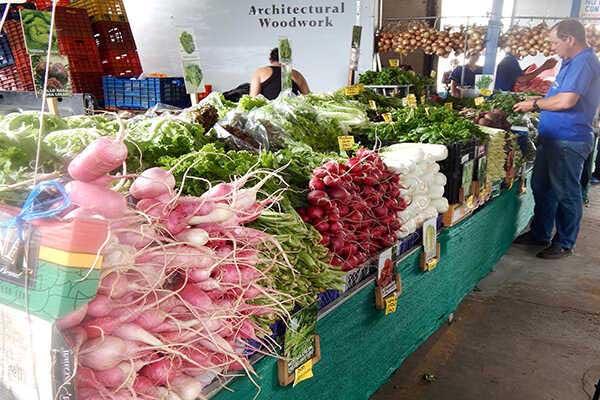
The foregoing is why the feria has become such a staple institution. Yes, it is a key part of the agrarian economy. Consumers appreciate the quality and support it. It’s a social center, built around a pleasant context. It has its own ambience. But it’s those tomatoes…and bananas that taste like honey…and lettuce that does not wilt before you can make it home…and red-hot peppers that are hot but full of flavor that keep people coming back for more.
Seven years ago, when my wife and I first arrived in Costa Rica, our first cupboard-stocking trip was to the Palmares’ Feria. We were not on a “diet,” just trying to maintain a sensible nutrition program. After about three months, Loraine complained about her baggy shorts. I mentioned that I had to poke new holes in my belt. After talking about the lack of candy and cake in our diet, and the amount of mangoes, pineapples, melons, bananas, strawberries, and mamon chinos (rambutans), along with tomatoes, red sweet peppers, comotes (Costa Rican sweet potatoes), and mushrooms, we both exclaimed at once, “It’s the feria!”
All Images Copyright: ©Lou Kritz

Get Your Free Costa Rica Report Here:
Learn more about Costa Rica and other countries in our daily postcard e-letter. Simply enter your email address below and we'll send you a FREE REPORT – Costa Rica: The Land of Pura Vida
This special guide covers real estate, retirement and more in Costa Rica and is yours free when you sign up for our IL postcards below.
Related Articles
There Are Many Reasons to Move to Costa Rica
An Overview of Traditions and Culture in Costa Rica
Best Places to Live in Costa Rica: Five Top Expat Havens
Upcoming Conferences
The Only 2024 Fast Track Panama Conference
If your dream retirement involves stunning beaches… lush green mountains… a warm climate with no hurricanes… first-rate healthcare… incredible value for money (a couple can live well on $2,200 a month)… and the World’s #1 Retiree Discount Program…
Join our Panama experts and expats in February and discover why Panama could be your perfect paradise.
REGISTER NOW, SEATS LIMITED: EARLY BIRD DISCOUNT HERE

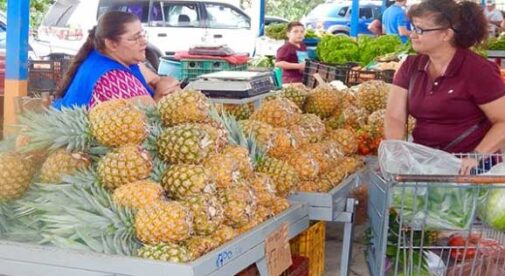
.png)